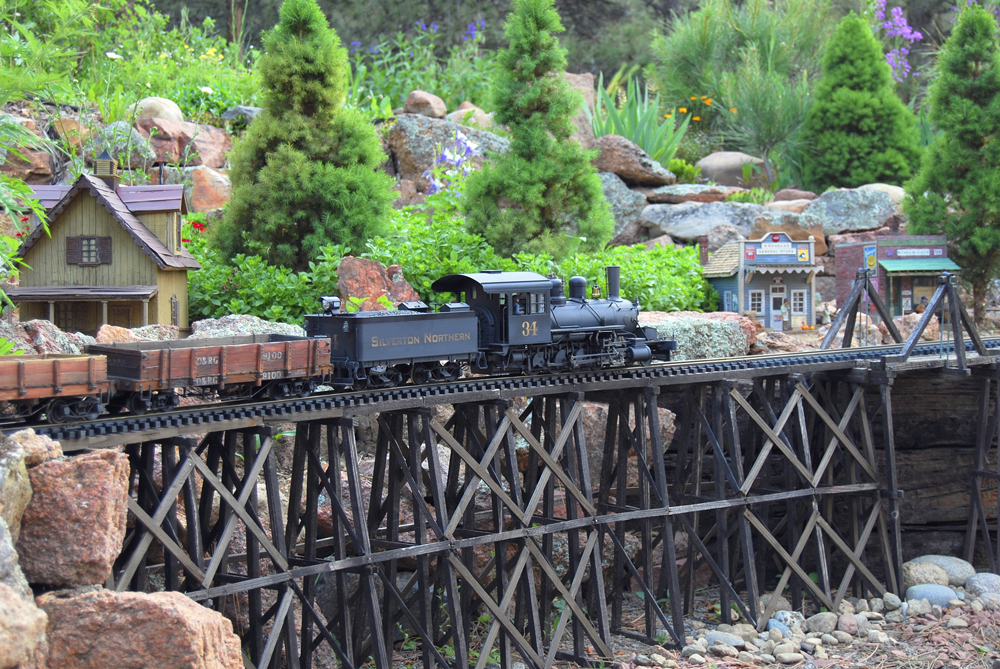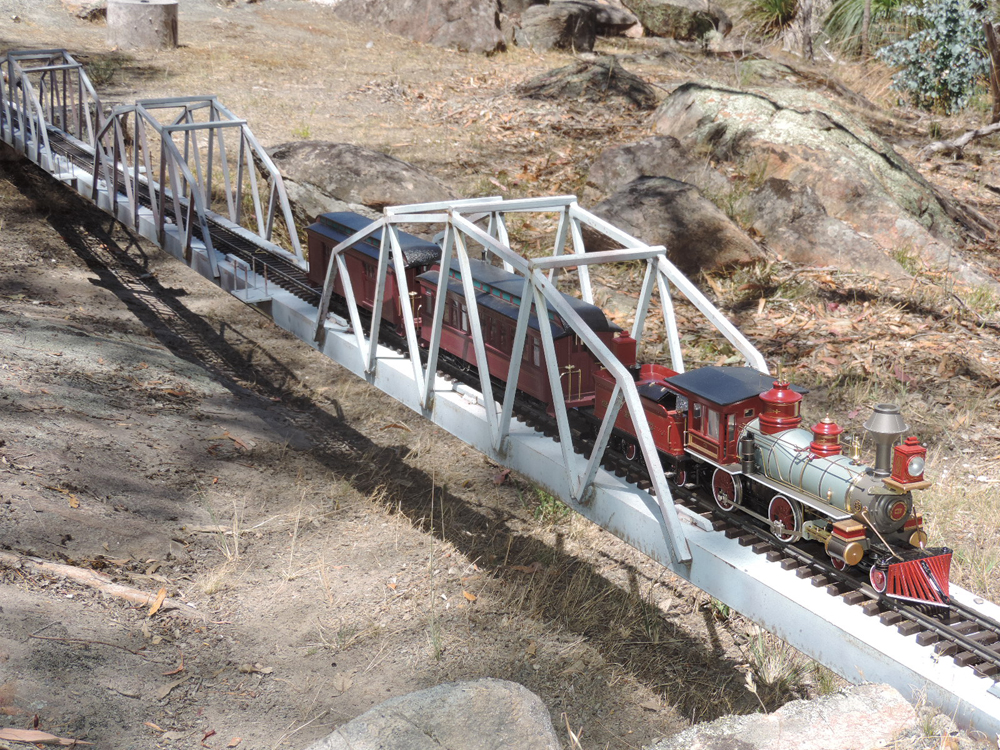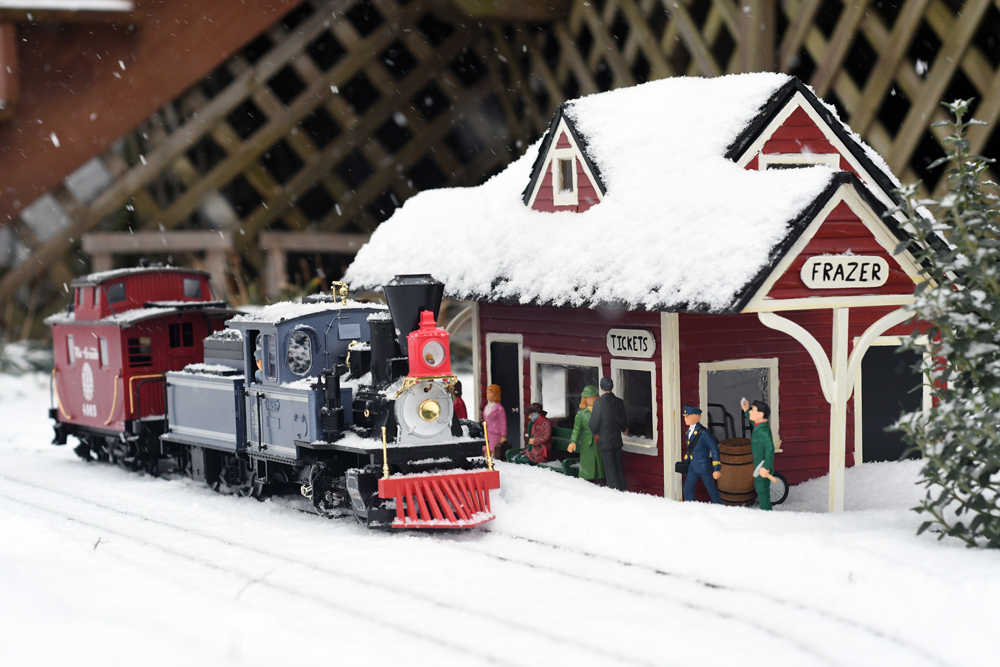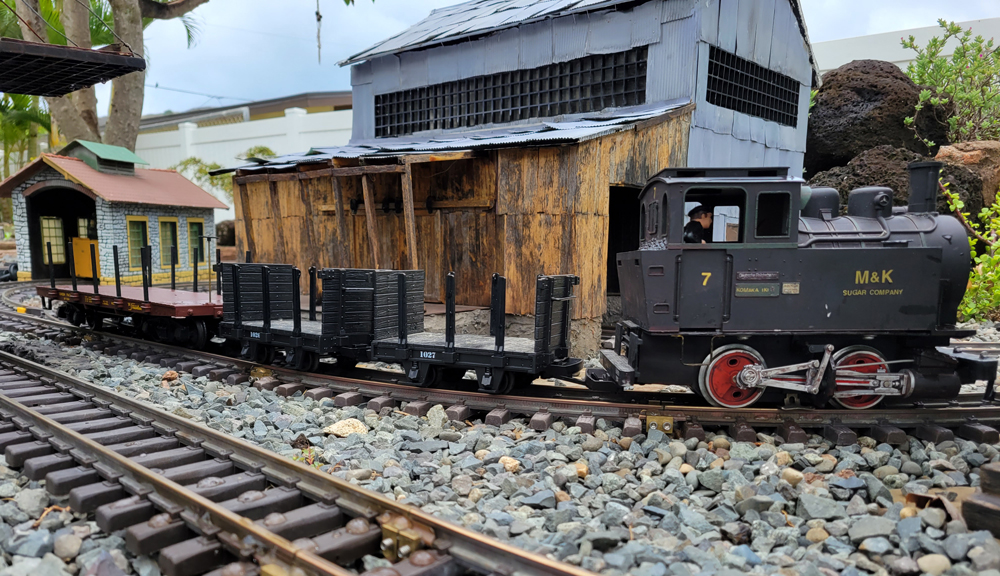My garden railway is like a 4 x 8-foot layout, only it’s scaled up to around 12 x 32 feet and built outdoors. I’ve added a small garden retaining wall to raise the railway to knee height, which is comfortable for viewing and placing trains on the track.
Originally, the patio had no roof or sides, so it could be a hot place to stand and run trains in our Australian summer weather or wet and windy during winter. I added a patio roof, and that was nice for overhead protection, but it didn’t stop the wind. Eventually I purchased café blinds all around the patio. What a difference this made! I can lift the blinds halfway up and it creates a kind of “window” to the layout.
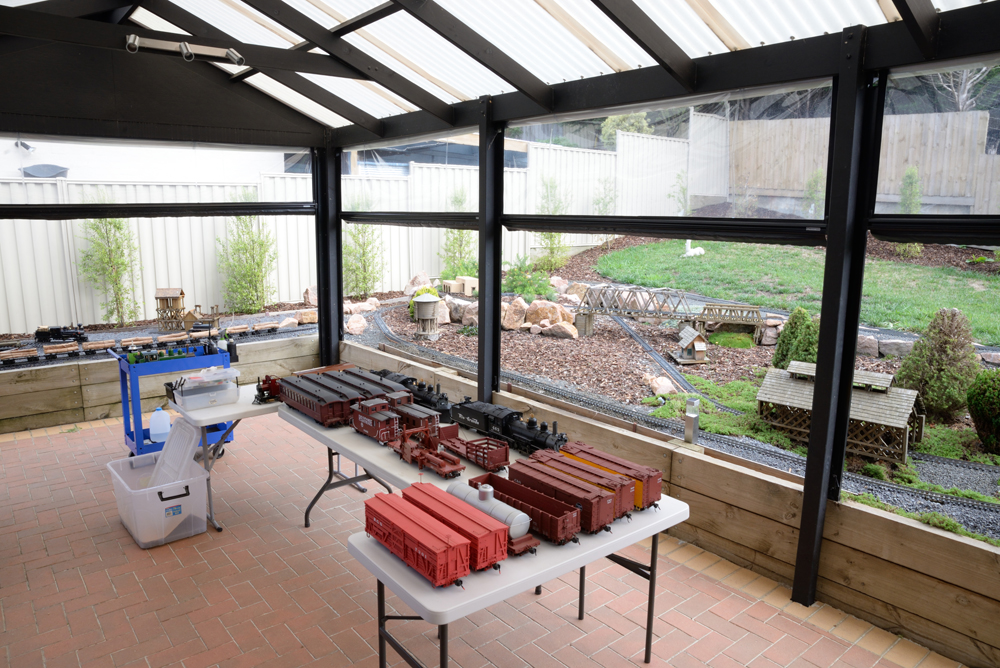
By arranging my heavier live steam locomotives onto a tool trolley, I can wheel them and their necessary supplies (oil, gas, and water) from the garage to the patio, where they can be placed on the steam-up track. I store all rolling stock on dedicated shelving in the garage with spacers between each piece. The spacers prevent the cars from bumping against one another. Because the cars are light, they are easy to carry to the railway.
This is the third iteration of my track plan. Initially I had unrealistic grades and sharp curves, with the odd S bend that made derailments or stalled trains more frequent. I even experienced flooding so I had to take up the track, rework the terrain, and re-lay the track in a new configuration. I am certainly happier with the current design and how it is integrated with the rest of the garden.
I used dwarf conifers to represent full size trees and groundcovers that have spread nicely. The garden itself is bordered with pittosporum plants, which will provide a nice green hedge and improve privacy. I added a rich brown wood bark mulch to the garden and railway. The effect is pleasing to my eye and reminds me of logging and early backwoods scenes.
Live steam and equipment
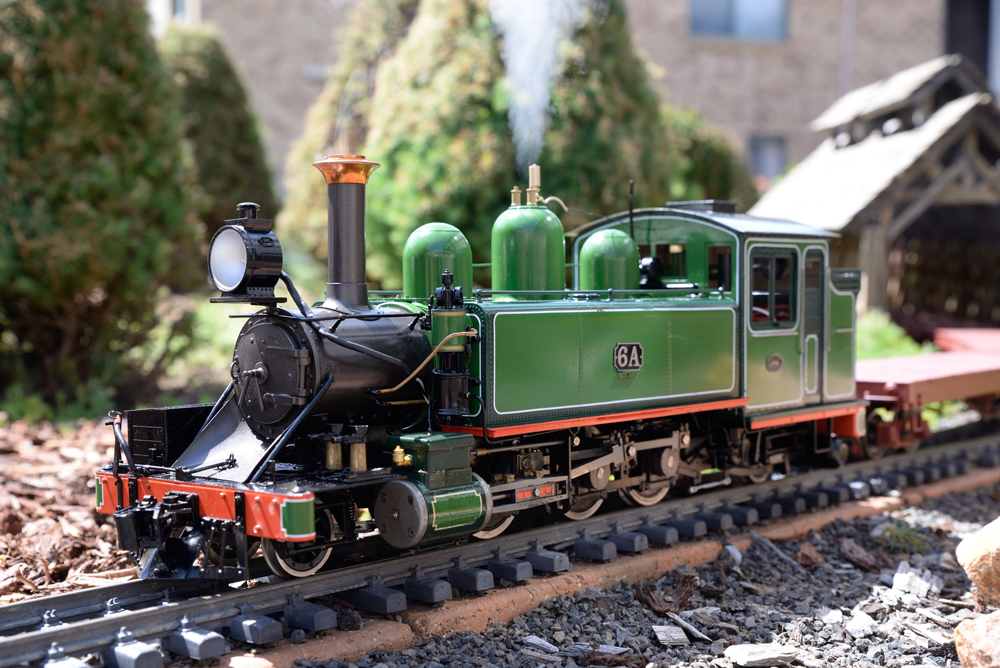
I run live steam on my railroad, more suited to narrow gauge radio-controlled or geared down steam locomotives due to the grades and tighter curves (a combination of 10’ and 12’ diameter track pieces). I lost interest in electric powered trains more than a decade ago.
One advantage of battery powered locomotives is that the track does not need cleaning to the extent it would if electricity needed to flow to the engine’s pickups, as there are none on these locomotives. But I discovered that live steam locomotives drop oil, which the wheels spread onto the track. So I still need clean off the rails from time to time, or the wheels spin on the grades.
For visitors to run, I have a pair of radio-controlled, battery-powered Bachmann K27s in 1:20.3 scale, fitted with Phoenix sound systems. These are quite large engines, and I have passenger and freight cars to match, all in the Rio Grande Southern scheme.
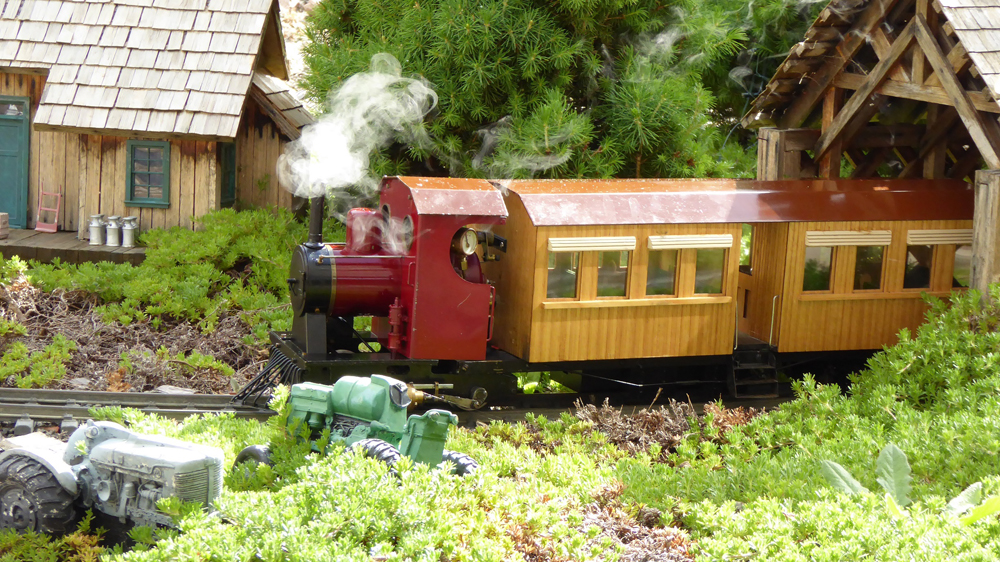
The original RGS had logging spurs, so I run a live steam Accucraft Shay and Climax. One engine pulls a dozen home-built skeleton log cars, and the other runs commercially available logging disconnects from Accucraft. The Shay has a manual throttle and reverser, which is all that is required due to its slow speed. I added R/C to the Climax, including operating headlamps at either end.
I recently acquired an Accucraft Baldwin NA locomotive from Argyle Loco Works. The NA is a model of one of the Puffing Billy Railway preservation steam engines. The Puffing Billy Ry. is only 20 kilometers (12.4 miles) from my home and is a worthwhile stop for anyone visiting Melbourne, Australia. The live steam model is a delight to behold. It has a lot of power and speed, so I added RCS radio control including front and rear lighting that works in synchronisation with the locomotive’s direction. This locomotive is re-gaugeable from 45 to 32mm. While my garden railway is built with 45mm track, I ordered the 32mm optional wheels sets in the event I also lay 32mm track to closely represent the 2’ and 2’ 6” rails.
I also have a coal-fired live steam locomotive, built from a “Robert” kit available in the UK. This little locomotive gives me great pleasure. The last steamer I wish to mention is a 2-2-0 “Coffee Pot” built by Rishon Locomotive Works in New South Wales, Australia. It was my first live steamer and still runs great today, although I run it more sparingly as I consider it a rarity.
Trackwork and structures
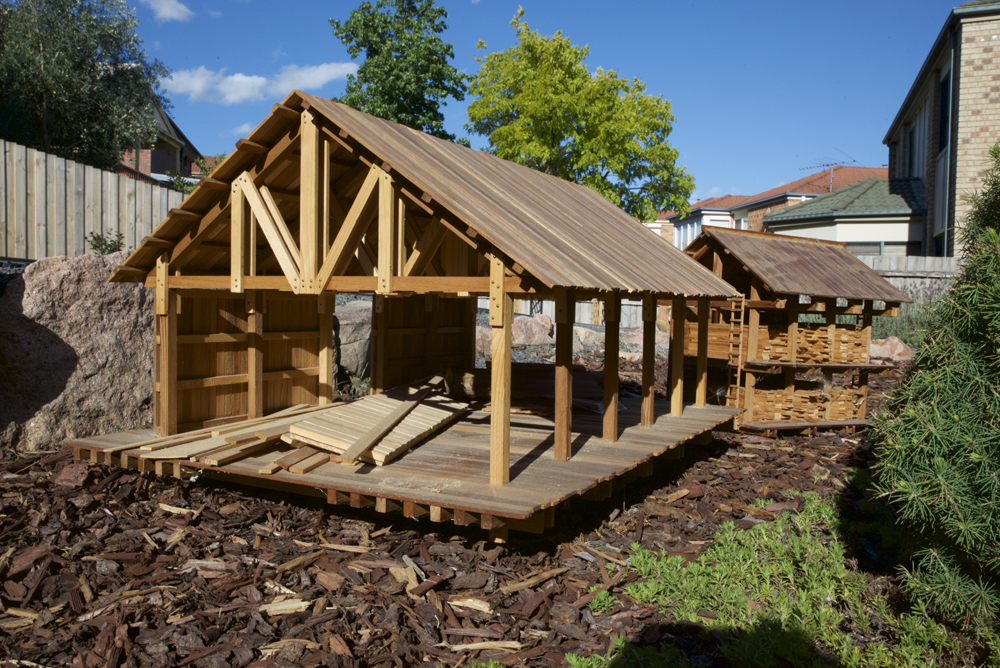
I hammered wooden pegs into the ground, then laid the track, screwing it into the pegs. I bought real rocks and fine gravel (about 6mm in size) for railway ballast from the local garden supply center. I built the bridges from Garden-Texture plans. The covered bridge is fun; I park the live steamer in the bridge and open the throttle, and steam pours out from gaps in the lattice.
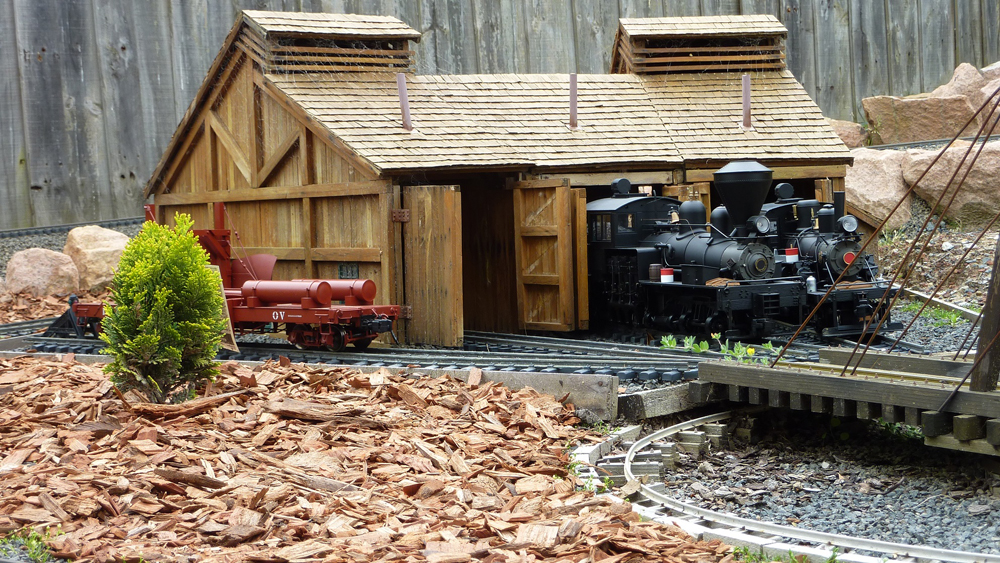
My three-stall roundhouse is in the shop for re-roofing. It will take approximately 1,000 shingles to finish the job, which is needed every five years. I use a glue gun from the hardware store and run a line of glue, then add a row of shingles one after the other, until I have all the rows complete. It’s tedious work, but necessary, as the harsh weather in Australia will wear it down.
The steam-up bay down the side of the railway was an afterthought, and I have begun adding sidings to take additional rolling stock.
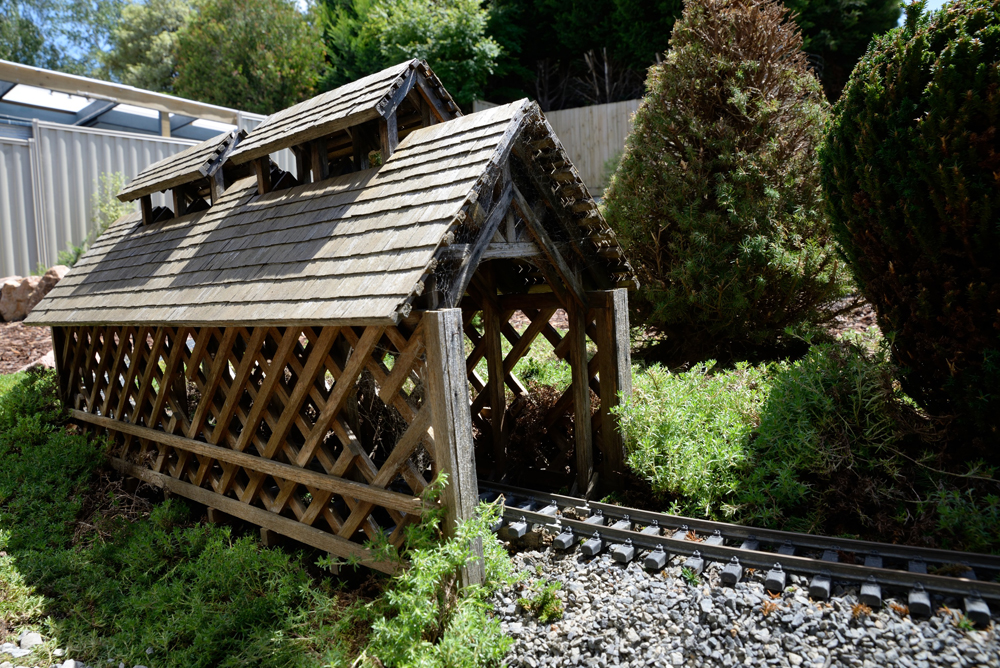
Part of the enjoyment of running live steam in small scales is performing maintenance afterwards. Having a lathe with a small mill means I can also make replacement parts, comfortably build kits, and scratchbuilding live steam locomotives, something I started doing recently. Part of the enjoyment is in researching and solving how to do something or make a part. The part I don’t enjoy is making a mistake, and there’s been a bit of that. But it’s how we learn.
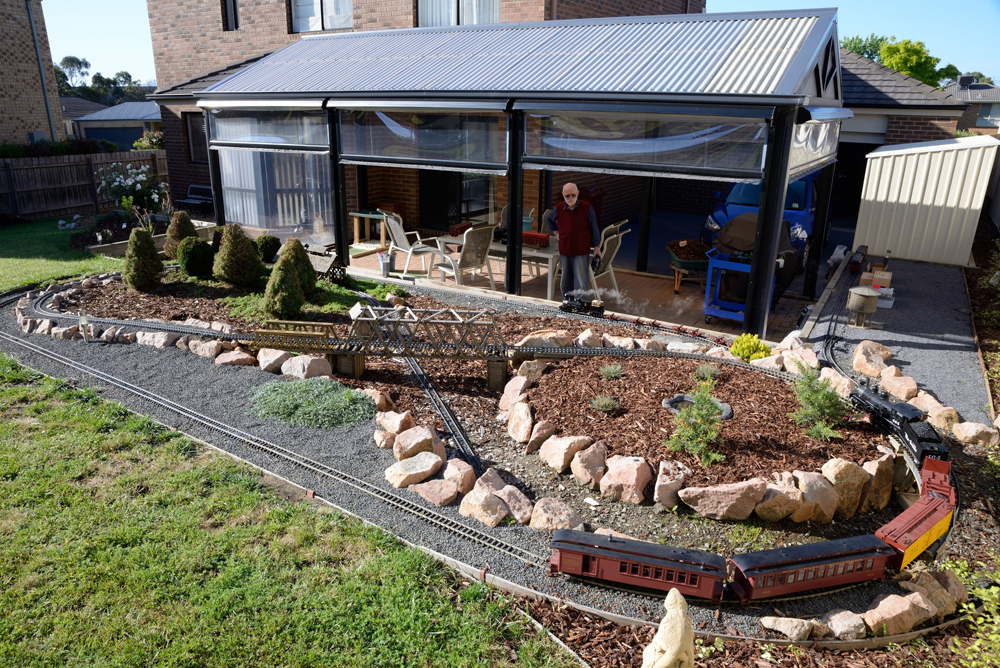
Now that the garden and railway are at a stage where I am satisfied there will be no more major changes, I will look forward to enhancements, like building rolling stock for the Baldwin and designing where I might be able to squeeze in a 32mm track.
I think of modeling in wood or plastic and machining metal as an art form, and my workshop is really a studio. Running trains on the garden railway is a separate activity from working in the studio, as it involves socialising with colleagues and simulating the sights, sounds, and action of real railway practices and having fun.
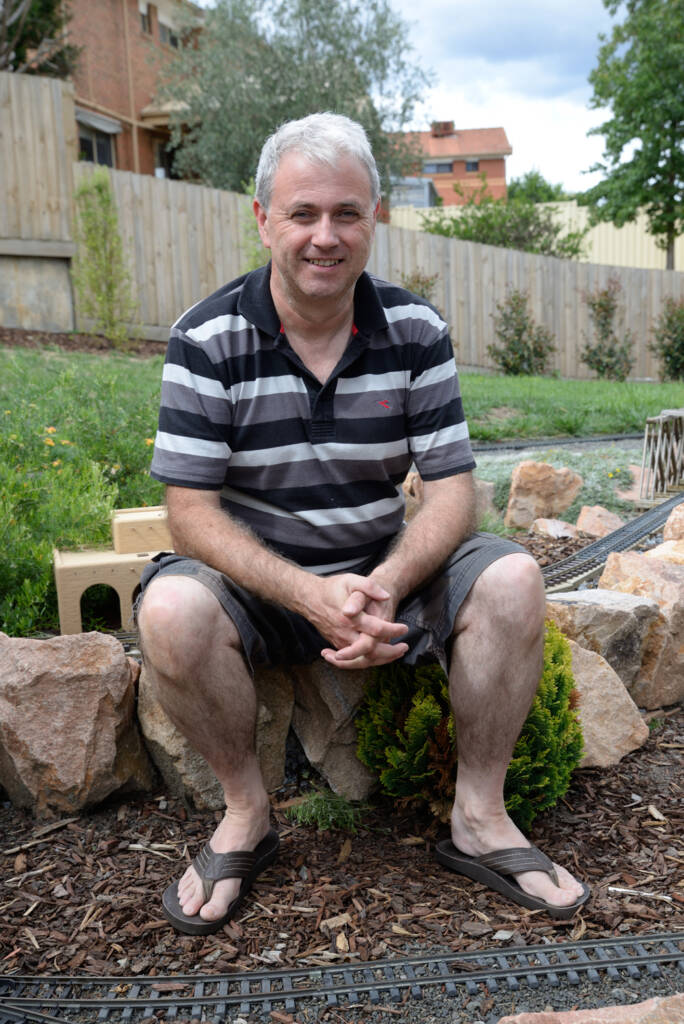
Railway at a glance
Name: JADE Railway (Joe and Anita DEmpsey)
Size: 12’-6” x 32’-0”
Scale: 1:20.3 and 1:19
Gauge: 45mm
Era: 1920 to 1950s
Theme: Rio Grande Southern, logging, and Puffing Billy Ry.
Age: 14 years
Motive power: Live steam Accucraft Shay, Climax, and Baldwin NA; DJB Engineering coal fired Robert; Rishon Locomotive Works Coffee Pot; two battery-powered Bachmann K27s
Length of mainline: 100 feet
Maximum grade: 3%
Track: LGB, USA Trains, and Aristo-Craft
Minimum radius: 5 feet
Structures: Primarily Garden-Texture kits or scratchbuilt
Control: RCS radio control






